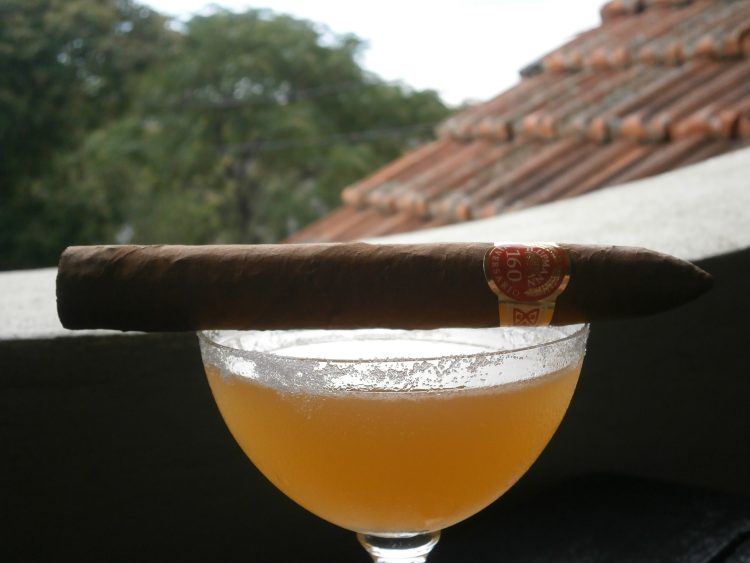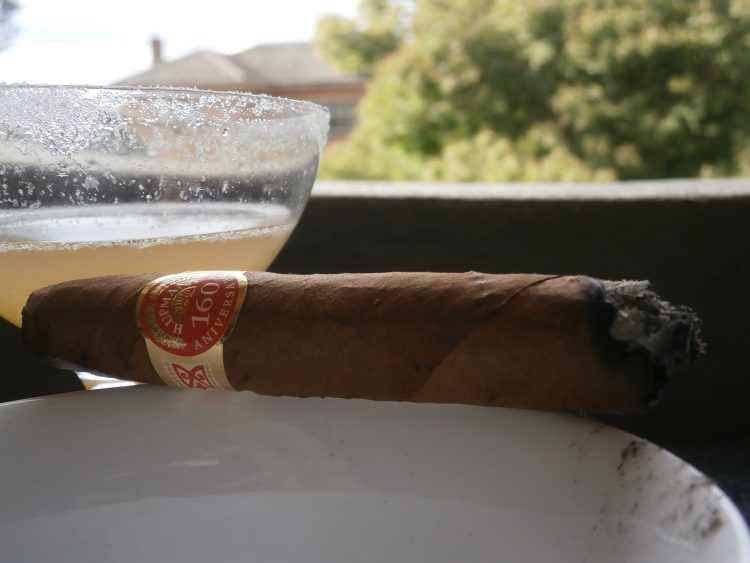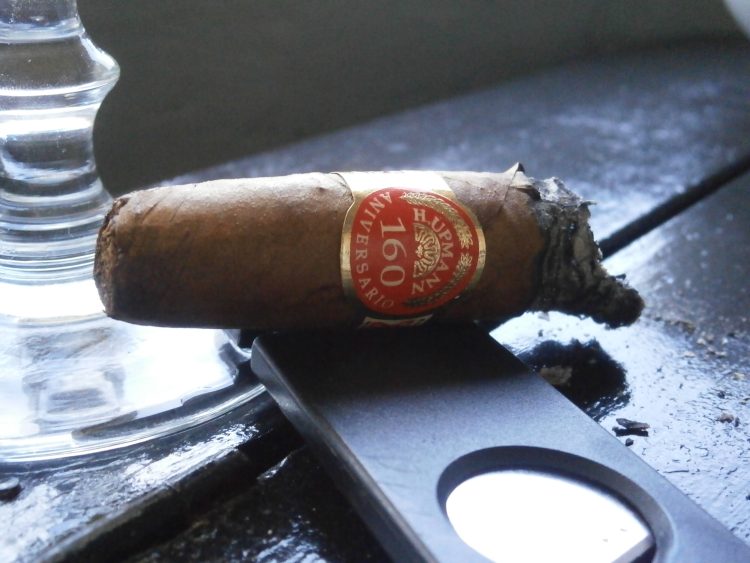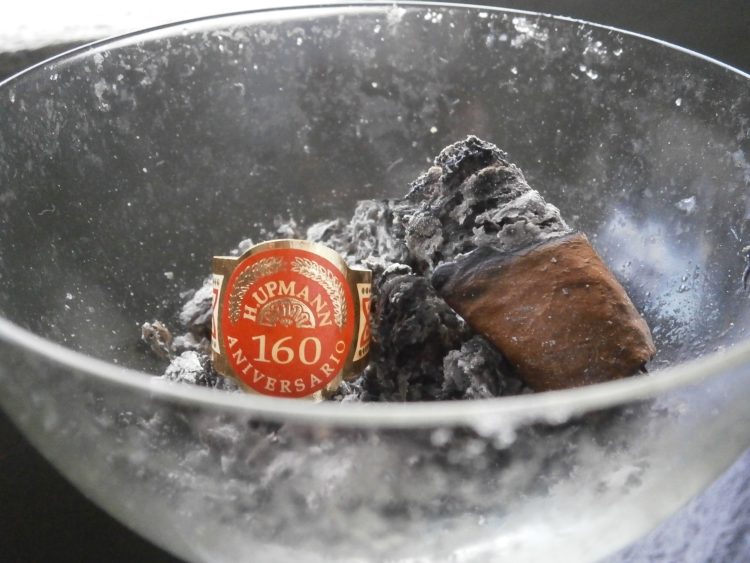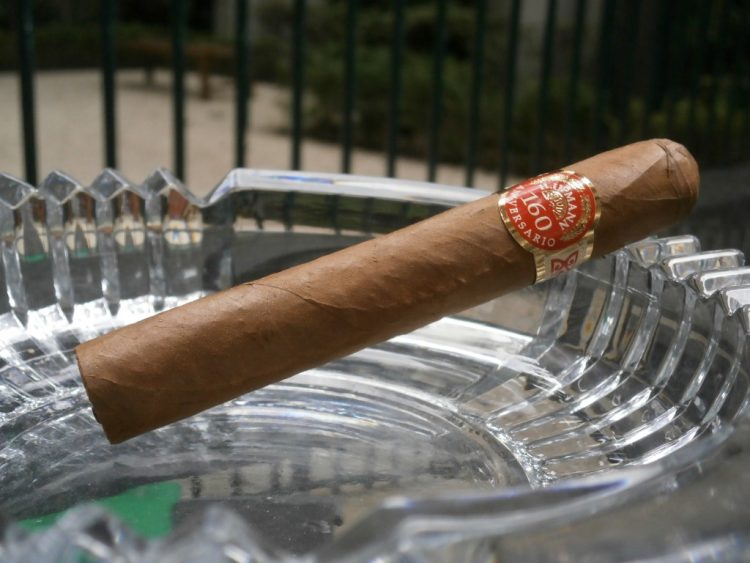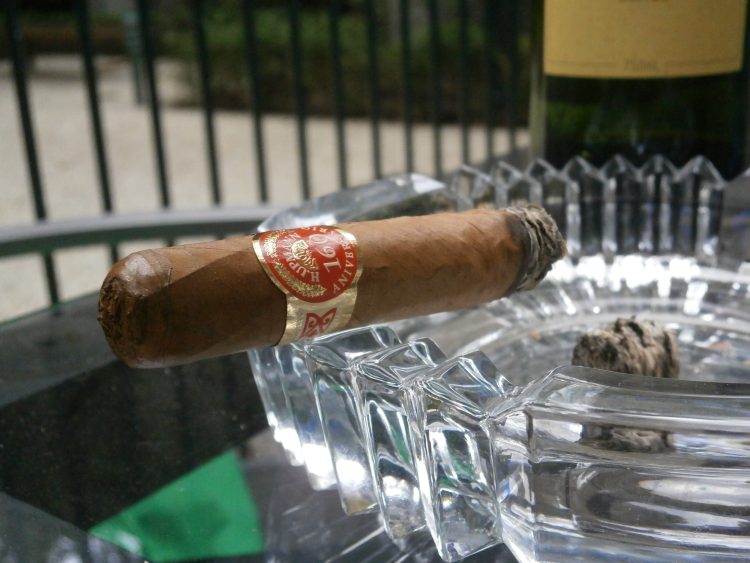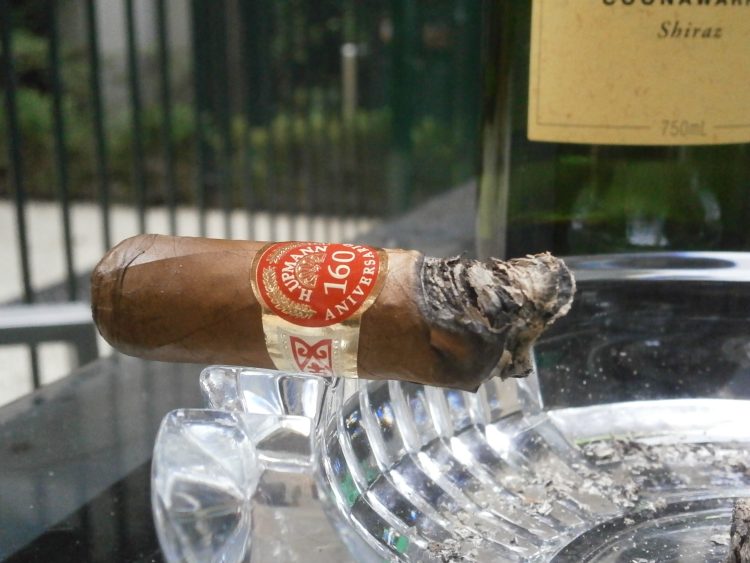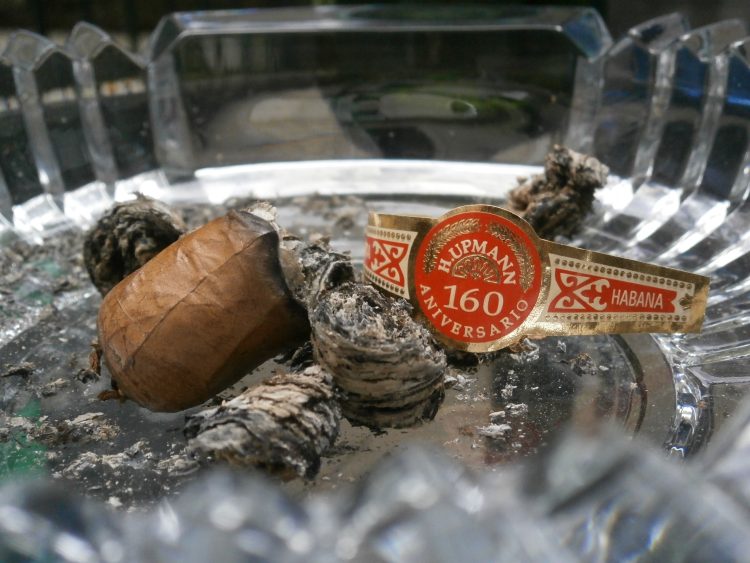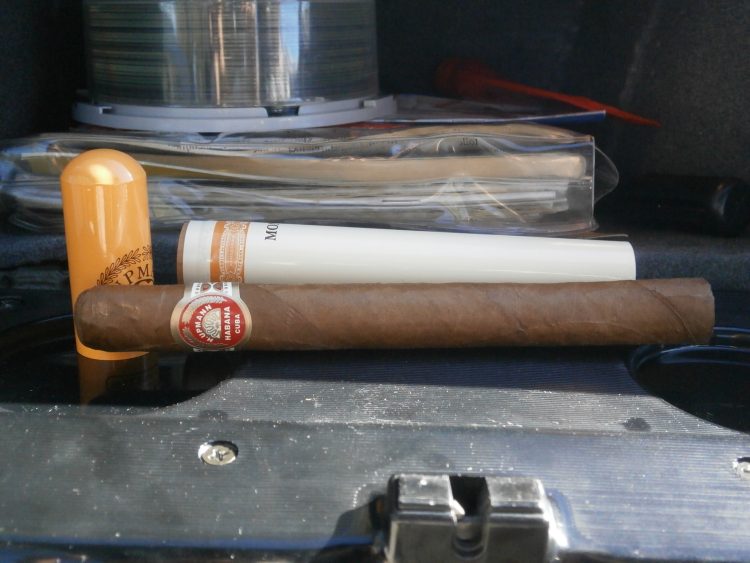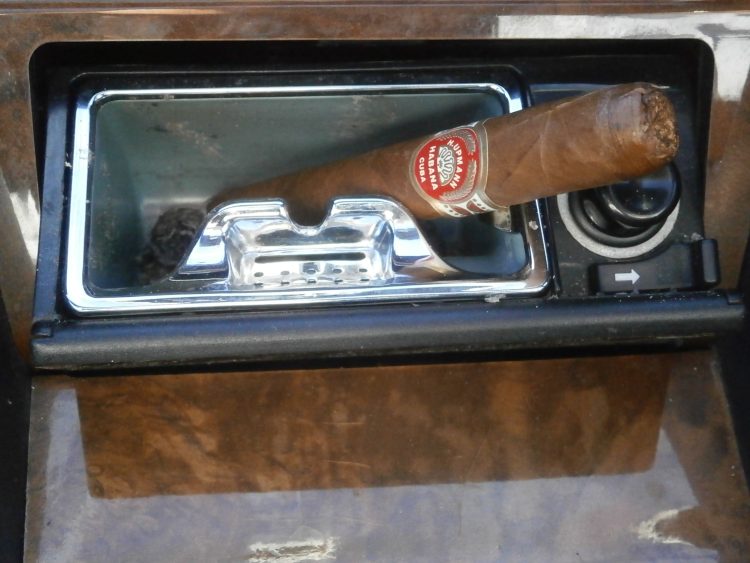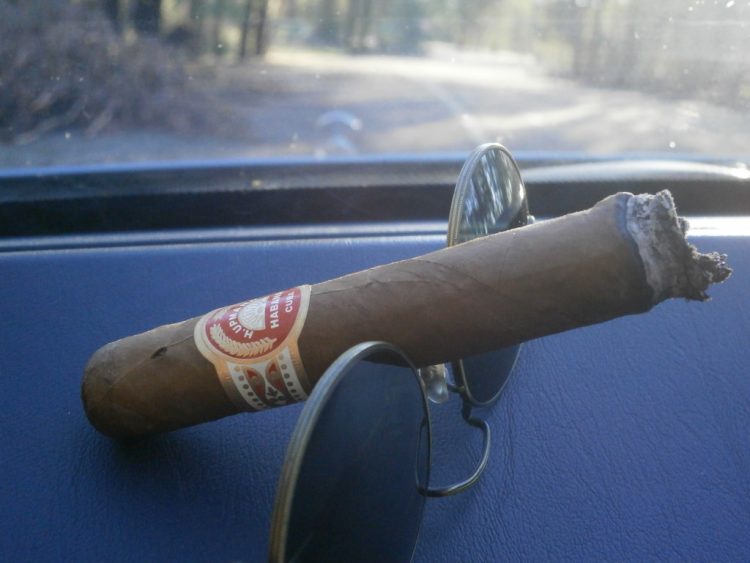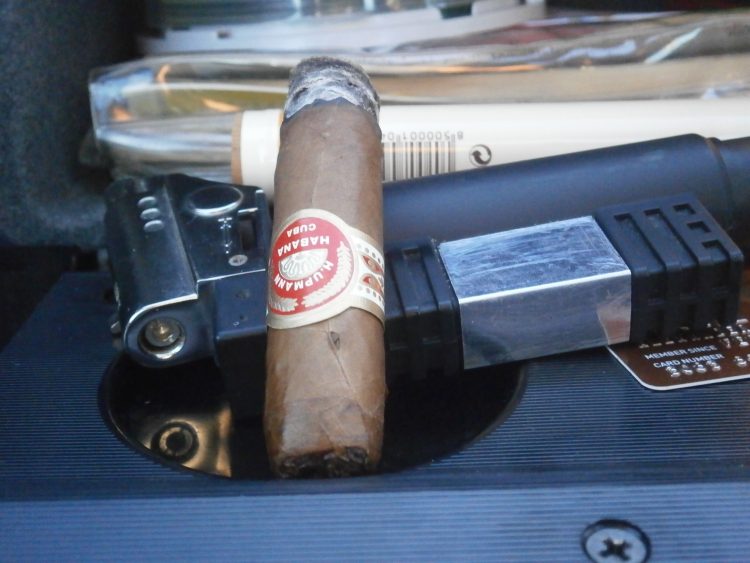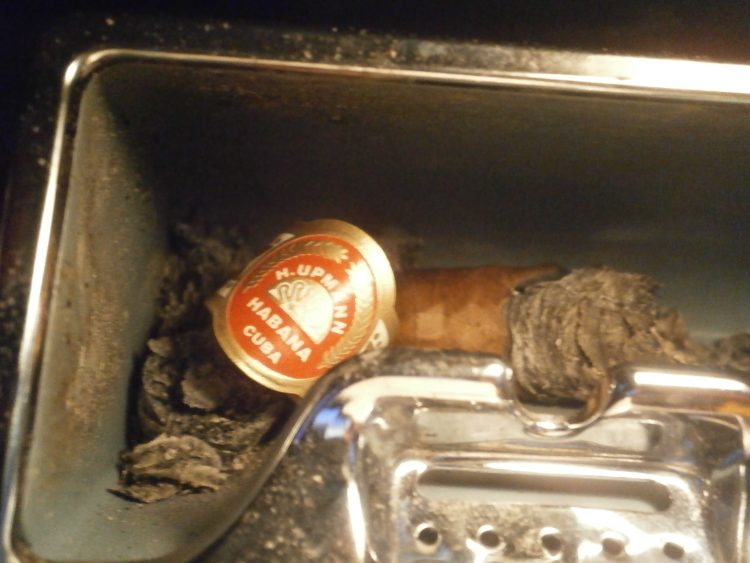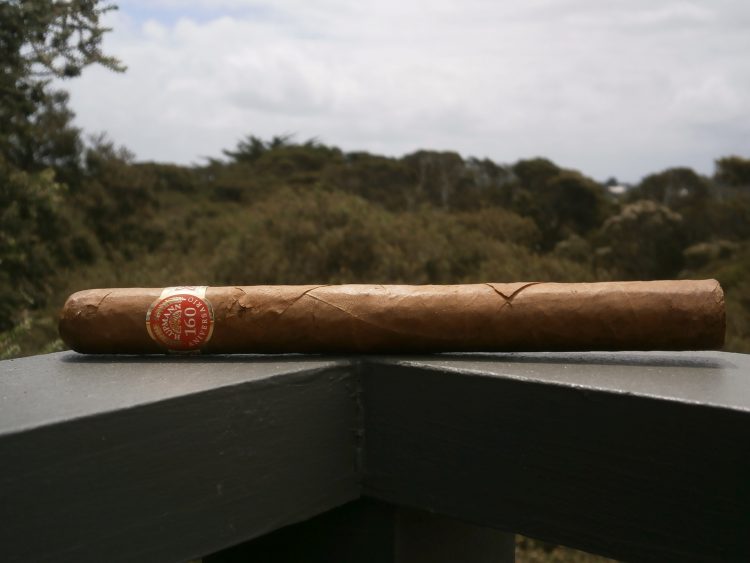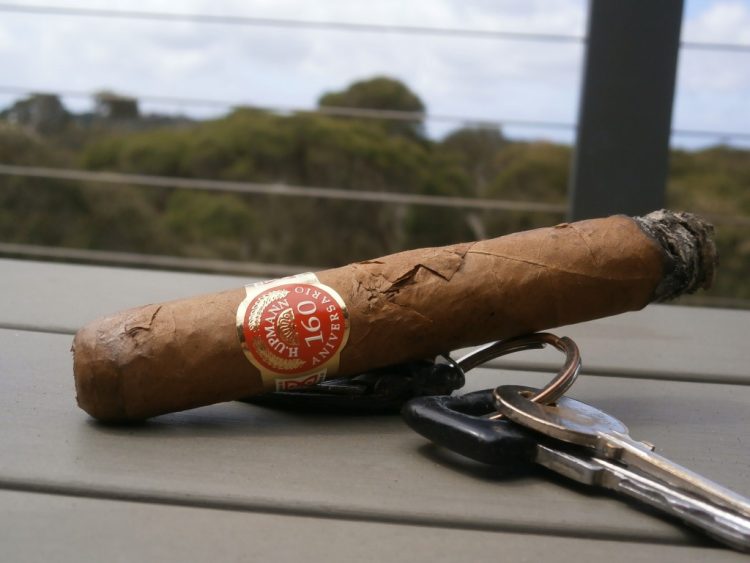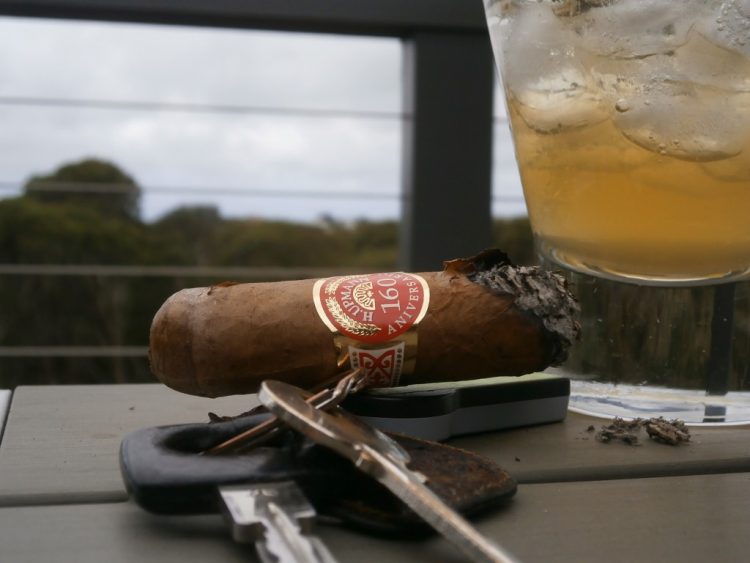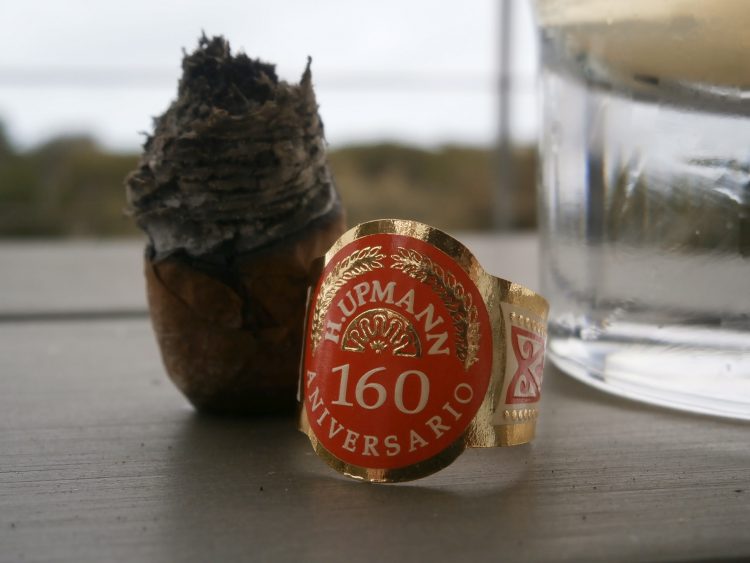The afternoon is turning to evening, but the weather remains a disgusting thirty eight degrees centigrade and overcast. It’s completely still, and the air is soupy and stale, thick with humidity. Occasionally a thunderclap rumbles in the distance, a hint of the storm that will break this warm front later on tonight, so I’ve chosen the balcony (which should remain fairly sheltered in even the most vicious of maelstroms) rather than the yard, just in case the gale comes on sooner than I expect. It feels familiar: in my youth I’d often come up here during summer storms with a big bowl of cherries to spit into the wind as I watched the lightning flicker over the suburbs. My habits may have changed a little, but occasional spitting is still involved.
The final cigar from the H. Upmann 160th Aniversario humidor, the noble No. 2 piramides, begins with an unusual sort of bitterness that only manifests on the aftertaste. The inhale is very pleasant, mid-strength, high grade tobacco and dried foliage (specifically the aroma released by the cracking underbrush as heavy boots tramp through the bush at the height of summer). Once that inhale mellows on the palette, however, it turns tart, bitter and sour: the dreaded tar.
It’s very rare when smoking outdoors that smoke rings hold their shape for any duration; even indoors there is often a fan or vent or some other agitator that pulls the rings apart. Not so today. The air is so thick and still that every puff hangs about my head until I wave it away, and smoke rings drift intact long into the distance.
The H. Upmann No. 2 was one of the early, seminal cigars in my smoking journey: the first cigar I smoked in Cuba. I had been smoking cigars occasionally for years, first at stag nights, then at birthday parties, and I had acquired a taste for the habit to the point where the things were starting to make an appearance at most special occasions. Shortly before departing for The Island I had purchased my first humidor, a cheap desktop that I hoped to fill with a few boxes on my return. All told, on that first night in Havana my total cigar smoking experience probably encompassed about three dozen cigars, almost all of them Montecristo No. 4s. At the time I could probably have named five cigars from three brands, and H. Upmann wasn’t one of them.
I arrived in the early evening and, tired from my journey, I planned for a quiet night. Cuba is Cuba however and (after a simple spaghetti meal in Havana’s Chinatown), I soon found myself in a bar on the Malecón with more than one Cuba Libre inside of me and another on the way. Resigning myself to the Havana night, I decided that it was time for a cigar. I asked at the bar, and they directed me to an old man in the corner, who smiled, murmured something about “bueno tobacco,” and produced for me a handsome pirámides. He snipped the end with a worn brass guillotine (very rare in Cuba). Four pesos.
Like most cigars in Cuba, it was glorious, but its significance in my evening was lost in the soup of rum and dancing. In the morning I found the band in my pocket and filed it in the pages of War and Peace, the book I was reading on my journey. Years later, after I had become a fully-fledged cigar aficionado, I skimmed through War and Peace again looking for some quote or other, and out fell an old Upmann band. I suppose it was probably fake – it was from a tout in Havana, after all – but it seemed pretty fantastic at the time.
Past the mid-way point now, and the cigar is not offering much; light to mid tobacco, and a vague, ashy, burning grass. A hefty puff out through the cigar cleans some of the ash from it, but doesn’t add a lot. There’s no complexity here, no subtlety.
I’ve been drinking a sidecar, a simple little drink of two parts brandy, a little less than one of lemon, and a little more than one of Cointreau. In the interests of efficiency I made a double before I came up to smoke, and left half of it in the freezer. I figured it would be alcoholic enough not to freeze, but apparently I was incorrect, as the second glass has the consistency of a 7-11 Slurpee or a hen’s night strawberry daiquiri. It’s not diminished for it.
The cigar ends as it has travelled, light, a little tart, and not particularly noteworthy in either direction.
While there’s nothing really wrong with the H. Upmann 160th anniversary cigars, they have to a stick been disappointing. When you see a limited edition humidor that contains standard production sizes like this does, the question you must ask is “are these a special blend, or are they merely standard cigars in a special box?” All three cigars here have exhibited exactly the same profile, and I feel that I can say absolutely that they are all a unique blend rolled for this humidor. Unfortunately, while it begins well and is very smooth, and is obviously composed of high quality tobacco, that blend is bland, slightly bitter and, by every measure, mediocre. In the case of the H. Upmann No. 2 and the Connoisseur No. 1, the 160th anniversary cigars are worse than I would typically expect from their standard production counterparts. These are not terrible cigars: if they were a cheap cigar that I could reach for when I wanted an uncomplicated smoke for an evening that was complicated enough already, these would definitely be on my list, but compared to the Partagás 150th (or indeed any of the Partagás aniversarios), and compared to the heights to which cigars at this level should aspire, they are garbage. I place the Upmann 2 between its sistren purely based on length. It is better than the Upmann Petite Corona mainly because that base cigar was a particularly poor example.
H. Upmann No. 2 160th Anniversary Humidor on the Cuban Cigar Website
